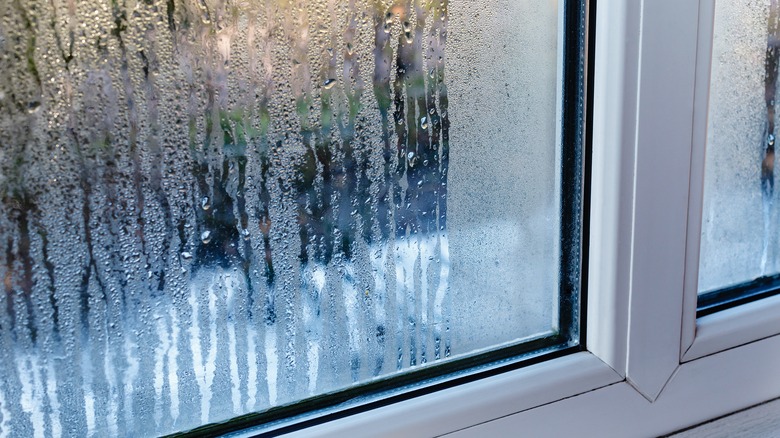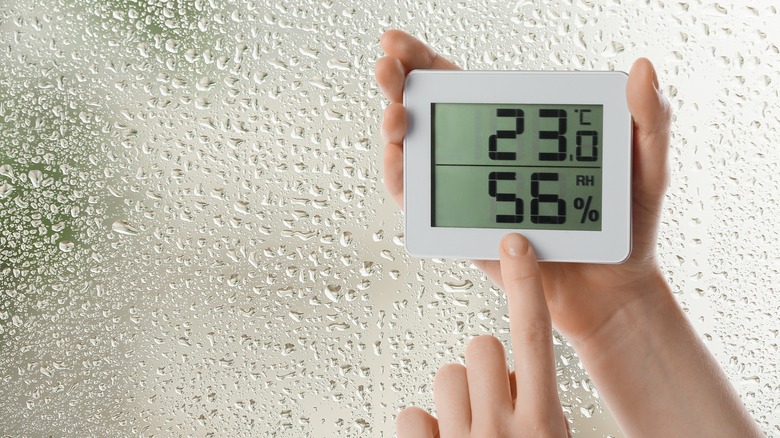How To Use An Ice Cube To Measure Your Home's Humidity Level This Summer
We may receive a commission on purchases made from links.
Sitting in your home feeling sticky or constantly getting dry skin can indicate that it's time to check your home's humidity levels. Too high humidity levels can lead to mold growth, structural damage, and poor indoor air quality. If humidity levels get out of control and get too high or drop too low, it can lead to many different issues, affecting your health and your home. While there are multiple ways to check your home's humidity, did you know you can use ice cubes to measure it?
The best way to do an ice cube test is to grab a glass of water and a few ice cubes. Put the ice cubes in the glass of water and wait 3 to 4 minutes. After the time is up, check the glass to see if condensation is forming on the outside of the glass. If so, your humidity levels may be high. If no condensation forms, your humidity is likely low. This ice cube test offers an easy and affordable way to check the humidity level. Ideally, your home's humidity level should be below 60%. If you want a more accurate reading, you can use a hygrometer, which you can find on Amazon for $10.
What are the benefits of checking humidity levels?
Regularly monitoring your home's humidity level this summer can improve your well-being, prevent adverse health effects, reduce energy costs, and prevent damage to your home. High humidity proliferates the growth of mold and mildew, which can damage your home's structure and surfaces, also posing a risk to your health and causing infections and illness. In addition to impacting your health, unbalanced humidity levels can reduce the energy efficiency in your home. By maintaining humidity levels, you help ensure your heating and cooling systems operate efficiently and optimally, lowering energy consumption and costs.
Uncontrolled humidity levels can also damage your home and belongings. Wood furniture, books, musical instruments, walls, and flooring are susceptible to humidity damage. Wood shrinks as humidity falls and expands as humidity rises. This constant expansion and contraction can cause wood to crack. Low humidity can also cause drywall to separate and wood floors to bend and warp. The same is true for books, which can flake and warp as the moisture content changes in your home. If a musical instrument sounds out of tune or begins to crack, low humidity is likely the culprit.
How can you change humidity levels in your home?
After doing the ice cube test, you're probably wondering what to do next. If your glass forms condensation, you likely have high humidity. You might have doors sticking, and you'll probably feel the stickiness on yourself. Some things you can do to lower the humidity include turning the air conditioner on higher, getting a dehumidifier, opening windows, checking for leaks, and installing weatherstripping. On the other hand, if your glass had no condensation, you likely have lower humidity, and your skin and nose might persistently feel dry. If this is the case, try getting a humidifier, boiling water on the stove, leaving the bathroom door open during and after showering, adding some plants, and opening up your dishwasher after washing to raise the humidity in your home.
Beyond the conventional methods, the ice cube test offers an easy and affordable way to determine humidity levels. Be proactive this summer to protect yourself, your family, and your home.


